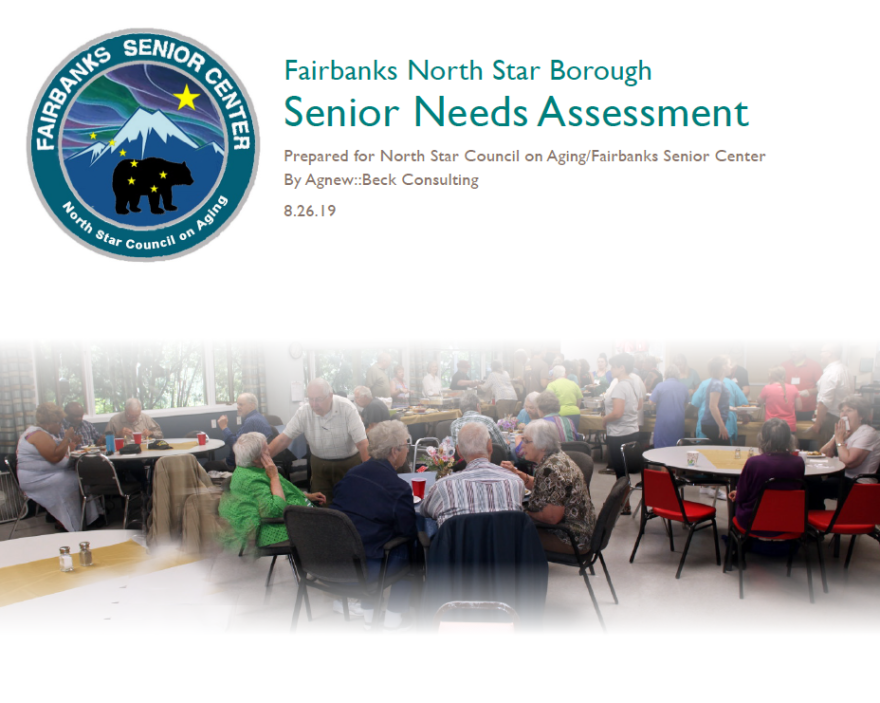A new study shows the Fairbanks North Star Borough’s senior-citizen population is big and getting bigger. And local organizations like the Fairbanks Senior Center are working on strategies to handle that rapidly growing population in communities all around the borough.
Nearly one in five Fairbanks North Star Borough residents will be 60 or older in the coming year. And the number of those age 80 and above will more than triple over the next 15 years.
“Come 2035, we’re going to have over 5,000 (people) 80 and older in the Fairbanks North Star Borough,” says Darlene Supplee, executive director of the Fairbanks Senior Center. “So how do we, as a community, start prepping for that? We’re already a little bit behind the eight-ball.”
It’s a dilemma that most Alaskan communities are grappling with, because the state has the fastest-growing senior population in the country. Supplee says preparing for what she calls a “tsunami” of aging residents requires a strategy that officials with the senior center and other organizations locally and statewide have already begun working on.
“We have a silver tsunami, which is happening in the state and which also is happening here in the Interior,” she said in an interview Friday.
Supplee says devising a strategy to deal with the borough’s growing elderly population requires data that projects its growth and its needs, especially for housing and health care. That data was last compiled in 1998, but it’s now been revised and can be found in the Senior Needs Assessment, a study commissioned by the senior center and released in September.

“You have to start with some solid numbers in order to be able to communicate to individuals where we’re going,” she said.
The assessment’s data shows among others the need for educating people to work in the many health-care jobs that’ll be needed to care for the elderly. Supplee says it’ll also serve to inform private-sector entrepreneurs interested in building senior housing and care facilities. And it identifies where seniors live around the borough.
“It gives a basis to see where the population is, where the needs are,” she said.
According to the assessment, there are about 18,000 people age 60 and above in the borough. Just over 5,000 live in Fairbanks, and some 4,600 live in outlying areas that include Chena Ridge, College, Ester and the Goldstream Valley. There are just over 3,000 in North Pole, and about 4,000 in Salcha and elsewhere around the borough.
The scattered clusters make it tough for volunteers to get out to those far-flung communities, especially during winter, says Laurie Lizotte, who manages the senior center’s Senior Companion Program.
“They (volunteers) live within the city,” she said. “It’s difficult for them to travel to the Goldstream Valley area or out to Ester. So I would like to recruit volunteers for the program who live on the outskirts of town.”
Lizotte says she’d like to establish a series of satellite senior center operations in those communities, where area volunteers would provide many of the same services as the Fairbanks office. She says they’d be modeled after a satellite center in Delta Junction and a smaller startup operation in Tok, both of which the Fairbanks Senior Center helped set up.
“We recruited our first lead volunteer in Tok,” she said, “so the Senior Companion program is in Tok, as well.”
Supplee says she and Lizotte will hold several meetings in those outlying borough communities to pitch the idea and to get their feedback on what seniors in their areas need. The first meeting will be tonight in the Goldstream Valley.
“This is going to be the first of many conversations,” Supplee said.
Tonight’s conversation begins at 6:30 at the Ken Kunkel Community Center, 2465 Goldstream Road.



